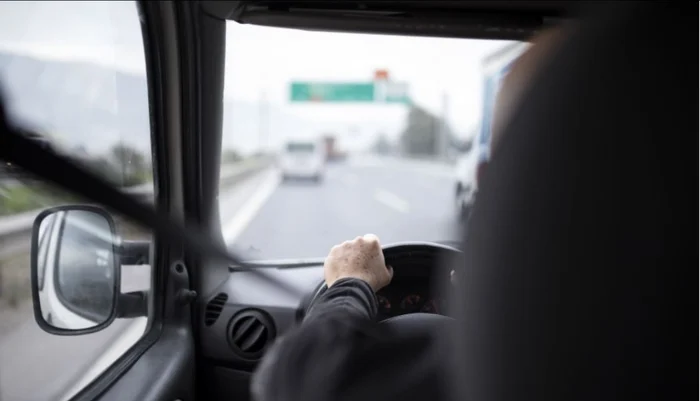
Table of Contents
How to Curb Distracted Driving:
Protecting Lives and Your Business
Distracted driving is a growing problem across Canada. In fact, the Canadian Automobile Association (CAA) has reported that distractions are involved in about 1 in 4 fatal crashes on our roads. Even more alarming, when drivers use their phones, they're 4 to 5 times more likely to be in an accident. And texting while driving? That risk increases by a shocking 23 times!
Despite widespread awareness and bans on handheld devices in every province and territory, distracted driving remains a persistent problem. For fleet operators, this issue not only jeopardizes the safety of your drivers, but it can also impact your business—costing you money, damaging your reputation, and even affecting your bottom line.
At DiCAN, we understand the challenges you face in keeping your fleet safe, which is why we’re offering practical advice on how to tackle distracted driving within your organization. By taking proactive steps now, you can protect your drivers, reduce risk, and build a culture of safety that resonates throughout your company.
Why Distracted Driving Matters
Before diving into solutions, let’s take a quick look at why distracted driving is so dangerous. It’s not just about a quick glance at your phone or reaching for something in the back seat. It’s about how those actions—no matter how brief—affect your ability to react in an emergency, make split-second decisions, and ultimately avoid accidents.
In a world where we’re constantly connected, distractions are more tempting than ever, but they are also incredibly risky. When you consider how many vehicles are on the road at once, it becomes clear that even small distractions can have catastrophic consequences. Whether it's a delivery vehicle, a service van, or a fleet of trucks, reducing distractions is key to protecting both your people and your assets.
5 Steps to Curb Distracted Driving in Your Fleet
So, what can you do to curb distracted driving and keep your fleet safe? Here are five actionable steps that can make a real difference:
-
Establish Clear Policies
Clear, concise policies are the foundation of any successful fleet safety program. When drivers understand exactly what is expected of them, they’re more likely to follow the rules. Your distracted driving policy should be easy to understand and include specific guidelines, such as:
- No texting, calling, or browsing on handheld devices.
- No eating or drinking while driving.
- No reaching for items or adjusting the GPS while on the road.
Make sure your policy is communicated effectively to all drivers and emphasize that safety is the top priority. Consider implementing a no-tolerance approach to phone use while driving, with hands-free exceptions only in emergency situations.
-
Educate and Train Regularly
Knowledge is power. The more your drivers understand the dangers of distracted driving, the more likely they are to take it seriously. Regular training sessions should focus on:
- Real-life examples of accidents caused by distractions.
- Statistics showing how much higher the risk is when using a phone while driving.
- Practical tips, like pre-programming the GPS before starting the trip and keeping the cabin organized to avoid distractions.
By consistently reinforcing the message of road safety, you help your drivers internalize these best practices, making them second nature.
-
Use Technology to Your Advantage
Technology is a double-edged sword. While it’s a major cause of distractions, it can also be part of the solution. Many companies are now using cutting-edge tools to help manage and reduce distracted driving risks:
- Cell Phone Blocking Apps: Apps like LifeSaver Mobile automatically block texting and browsing while the vehicle is moving. This not only reduces temptation but also keeps drivers focused on the road. Some apps, like LifeSaver, even provide speeding alerts, further reinforcing safe driving habits.
- Telematics Systems: These systems give fleet managers real-time insights into driver behavior, such as hard braking, speeding, and phone use. Monitoring this data allows you to spot risky driving patterns early and address them before they lead to accidents.
- Driver Assistance Features: Lane departure warnings, collision avoidance systems, and adaptive cruise control are all examples of technology that can help reduce human error and keep drivers safe.
Of course, it’s important that your drivers are trained on using these technologies responsibly, viewing them as helpful tools rather than replacements for attentive driving.
-
Promote Safe Communication Habits
Communication is key in the world of fleet management, but it doesn’t have to come at the expense of safety. Encourage practices that help drivers stay in touch with dispatch and clients without being distracted:
- Scheduled Check-ins: Drivers should only make calls or send messages during scheduled stops—not while on the road.
- No-Call Policies: Encourage drivers to ignore calls and texts while driving. Let them know that calls can wait until they’ve safely pulled over.
- Automated Responses: Tools like automated replies or “do not disturb” features on phones can help drivers manage communication without the pressure to respond while driving.
By promoting these safe communication habits, you can help reduce the temptation for drivers to multitask behind the wheel.
-
Foster a Culture of Safety
Policies, training, and technology are essential, but the most effective way to prevent distracted driving is to foster a culture of safety within your organization. Here’s how:
- Lead by Example: If your managers and executives model safe driving behaviors—like not using phones while driving—drivers are more likely to follow suit.
- Celebrate Safe Drivers: Reward drivers who consistently demonstrate safe driving practices. This could be through recognition or incentive programs.
- Encourage Reporting: Create a culture where drivers feel comfortable reporting near-misses or other distractions without fear of punishment. This can help identify issues before they lead to accidents.
A safety-first mentality should be ingrained in every level of your organization, from top to bottom.
The Bottom Line: Safety Saves Money
Taking steps to reduce distracted driving can have a huge impact on your company’s bottom line. Fewer accidents mean lower insurance premiums, fewer vehicle repairs, and a safer, more reliable fleet. Plus, by prioritizing safety, you build trust with your clients and the public, enhancing your reputation as a responsible and professional organization.
At DiCAN, we’re dedicated to helping you ensure the safety of your fleet. By establishing strong policies, providing ongoing training, using the right technology, and creating a culture of safety, you can reduce the risk of distracted driving and protect what matters most—your drivers, your assets, and your reputation.
Free Distracted Driving Policy Template Download
Enter your email address and first name below to be sent a copy of our free editable distracted driving policy template!





